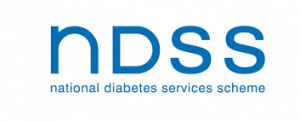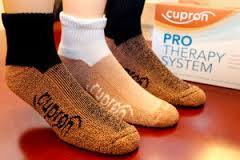A melanoma is a malignant tumour (cancer) arising from the pigment producing cell of the skin, know as the melanocyte.
Melanomas are a life threatening, but potentially treatable form of skin cancer on the feet, if diagnosed or detected at an early stage.
However, skin cancer on the feet, particularly within the nail and plantar sole can be difficult to recognise. Consequently, this can lead to a delay in diagnosis and a poor outcome, when compared to other body sites. This problem is increased when there is a lack of pigmentation in suspected lesions, known to occur on the feet.
The diagnosis of a skin cancer on the feet can only be certain though a tissue biopsy, histological examination and specialist interpretation. This is why it is very important to get any suspicious lesions on your lower limbs and legs checked by a health practitioner.
Furthermore the number of cases of malignant melanoma worldwide is increasing faster than any other form of cancer amongst Caucasians. The current statistics are 1:120 for men and 1:95 for women.
Melanoma is a rare occurrence before puberty, but shows a gradual increase in incidence from the age of fifteen, peaking at around the age of fifty. Around 80% of lesions occur between the ages of 20-74 years. 30% of these skin cancers occur on the lower limb, 3-15% of these will occur on the foot or ankle region.
If you are concerned about a unusual lesion on your foot or lower limb do not delay. If the melanoma is < 1 mm thick there is a 95% survival rate at 5 years. Lesions > 4 mm thick hold a 50% chance of survival at five years.
There are Four Types of Melanomas (Skin Cancer on the Foot):
Acral Lentiginous Melanoma (ALM)
Running as a layer of malignant melanocytes within the superficial layer of the skin. This type of melanoma is found equally across all skin types and is frequently observed in darker skin, representing about half of the melanomas occurring on the hands and feet.
Clinically appears as a ill defined mole or patch of light brown or grey discolouration of the skin and can often be missed.
Nodular Melanoma (NM)
Clinically appears as a nodular lesion, often seen in older patients.
Superficial Spreading Melanoma (SSM)
Is the most common of the four types because of its rapid growth phrase (lateral spread), before becoming invasive. It may arise as a new lesion or in a pre-existing mole. This type has been most frequently reported arising on the top of the foot.
Letingo Melanoma (LM)
Is a type of melanoma, found almost exclusively on the face and neck of older adults as a result of sun damage.
Risk Factors for Skin Cancer on the Feet:
- Intense sunlight and UV radiation exposure.
- High number of moles.
- History of 3 or more severe sunburns.
- Immunosuppressant (including organ transplant recipients).
- Blue or green eye colour.
- Freckles and/or the inability to tan.
- Red hair colour.
- Pre-existing moles on the soles of the feet.
- History of penetrating injury.
- Exposure to agricultural chemicals.
- Any mole or solitary vascular lesion whether new or pre-existing which is growing or changing shape or colour should be referred for a specialist opinion.

The ‘ABCDE ‘ Rule in Diagnosing Suspected Skin Lesions:
- Asymmetry, one half of the lesion is not identical to the other.
- Border, a lesion with an irregular, ragged or indistinct border.
- Colour, lesion has more than one colour present within it.
- Diameter, the lesion has a diameter of greater than 6 mm.
- Evolution, any change in the lesion in terms of size, shape or colour.
The “CUBED” Rule for Diagnosing Suspected Skin Lesion on THE FEET:
- Coloured, lesions where any part is not skin colour.
- Uncertain diagnosis, any lesion that does not have a definite diagnosis.
- Bleeding, lesions on the foot or under the nail, which bleed or ooze fluid.
- Enlargement, or deterioration of a lesion or ulcer despite therapy.
- Delay, in healing of any lesion beyond 2 months.
Differential Diagnosis for Skin Cancer on the Feet:
- Foot Ulcers
- Warts
- Ingrown toenail
- Tinea Pedis/ Onychomycosis (fungal nail infection)
- Foreign body
- Bruising
- Corns/ callus
- Ganglion
As many of the above benign conditions are very common, identifying a rare occurrence of skin cancer of the feet amongst them can be challenging. However when individual skin lesions do not respond to a treatment in a normal, timely manner the original diagnosis should be re-considered.
Requesting a histological assessment of any lesion that does not resolve in 2 months, but which oozes or bleeds or has no clear diagnosis is advisable.
Melanomas Found in Toenails:
Pigmentation and melanomas can also be found within the nail bed so must also be monitored or checked by a health professional.
It must be noted that typically in a dark skinned person, benign nail pigmentation becomes increasingly common with age and is typically found in varying degrees of intensity on several digits.
Harmless pigmentation in the nails may also be caused by certain drugs, trauma, fungal infection and inflammatory diseases, such as lichen planus or psoriasis.
Pigment that does not change is not necessarily benign, however lesions that increases in size or change are more likely to represent malignancy and should be checked promptly. One exception to this in children where the pigment arises in the nail and can change quite dramatically as the child matures.
The “ABCDEF” Rule for Melanomas in the Toenails:
- Age, in the 5th to 7th decade of life.
- Band, longitudinal brown or black streak that measures 3 mm or more.
- Change, in the nail or lack of change in a nail despite treatment.
- Digit, most commonly the big toe.
- Extension, of the pigment onto the adjacent skin or nail fold.
- Family, history of melanoma or vascular nodule.
Podiatrist are often the first on the scene to see or alert their patients on lesions that need further investigation on the soles of the feet, as they are inspecting the area.
At Proactive Podiatry we routinely check if there are any unusual lesions on the feet, including in-between the toes if you are unable to reach or inspect for yourself.
 Trained in dry needling (acupuncture) foot mobilisation therapy and prolotherapy.
Trained in dry needling (acupuncture) foot mobilisation therapy and prolotherapy. If this suits your needs and you are looking for a podiatrist who will care and cater to all your foot care needs then please call us on (08) 8265 2227 to make an appointment today or make an online enquiry and we will call you.
If this suits your needs and you are looking for a podiatrist who will care and cater to all your foot care needs then please call us on (08) 8265 2227 to make an appointment today or make an online enquiry and we will call you.







